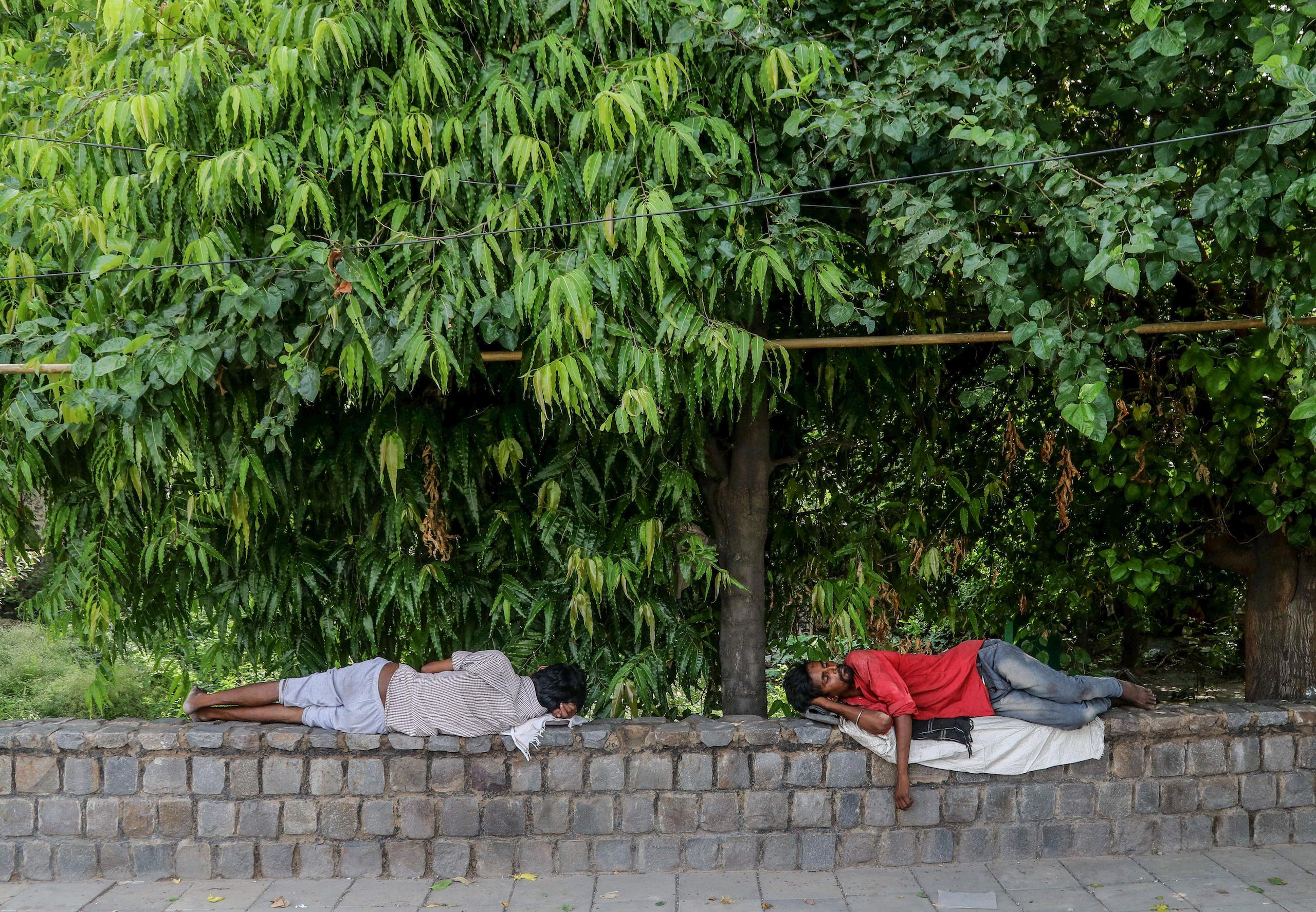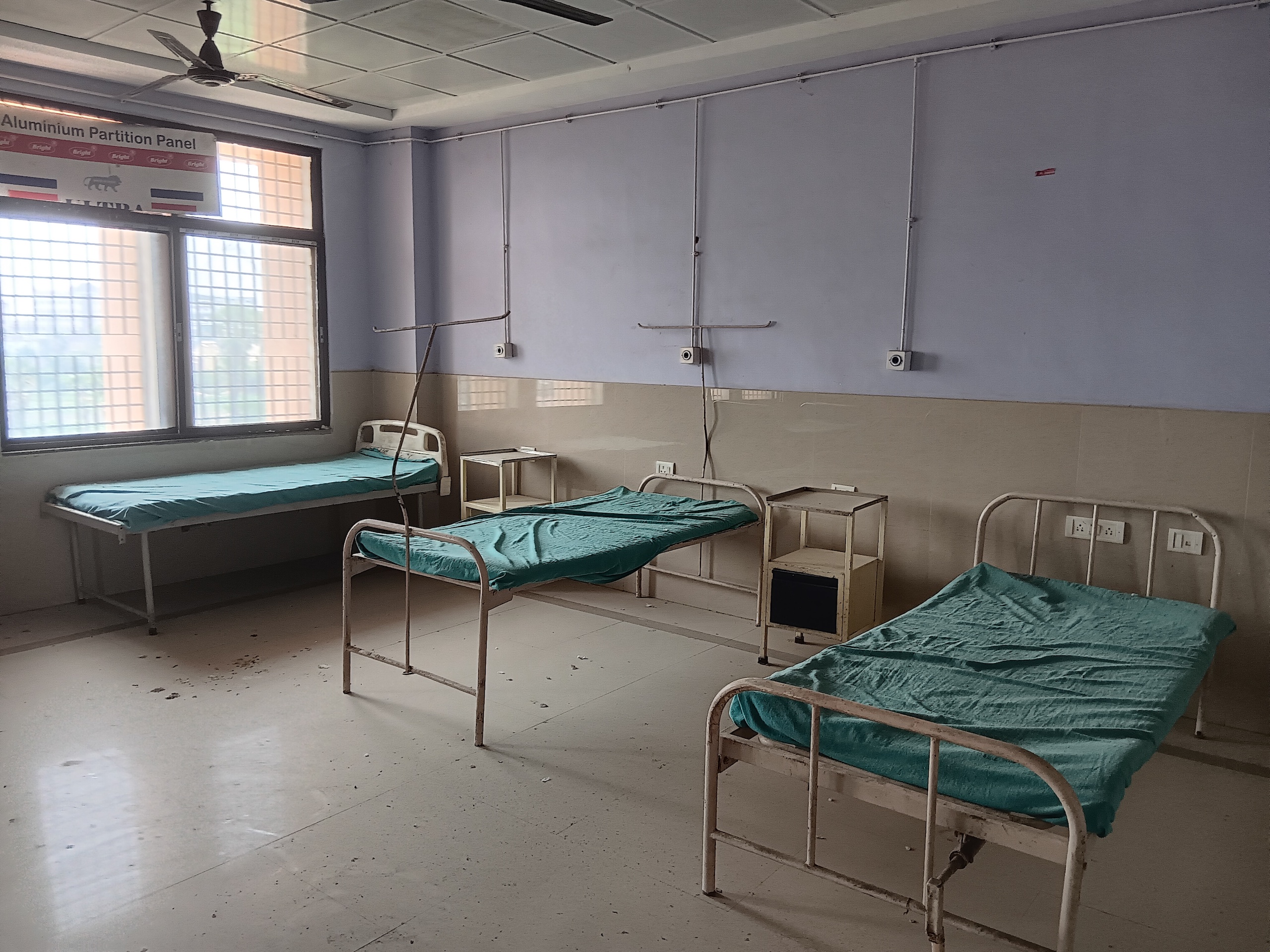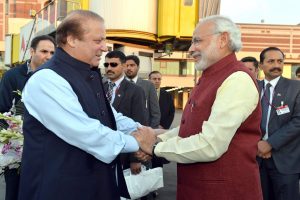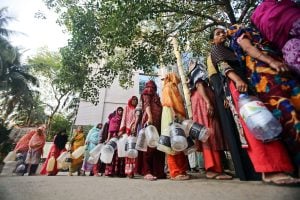In a brief press release dated 31 May 2024, the Disaster Management Department (DMD) of the Indian state of Bihar – one the hottest and most humid in the country – said 14 people died of extreme heat the previous day, including 10 officers on duty during the Indian elections. This number is likely to be a severe underestimate, especially as local newspapers carried details of almost two dozen polling officers who died in the heatwave that gripped Bihar from 29 May to 1 June this year. Going through the numbers, Dialogue Earth estimated that Hindi newspapers had tallied at least 100 deaths across the state, with over 55 deaths on 30 May, more than 40 deaths on 31 May and six deaths on 1 June.
When asked by Dialogue Earth about the discrepancy between the official figures and news reports, an official of the DMD said on condition of anonymity, “We have verified and counted heatstroke deaths of only those in the hospital and whose post-mortems were conducted. We did not count deaths due to heat stroke at home or of those who died before reaching hospitals.”
With all signs pointing to more frequent and more intense heatwaves in South Asia , authorities in the region’s most populous country, India, are still struggling to prepare for heatwave-related health challenges.
Heatwave deaths in India have steadily been on the rise and often make headlines – with the heat-related deaths in the last week of May 2024 being no exception. According to some estimates, around 22,000 people have died as a result of extreme heat in India between 1992 and 2015. A recent Lancet study said India marked a 55% rise in deaths due to extreme heat between 2000-2004 and 2017-2021.
But despite the unrelenting heatwave and resultant health crisis, and despite the creation of Heat Action Plans (HAPs) in some critical states, the heatwave season is marked by a disturbing rise in deaths, inundated hospitals and inadequate infrastructure. To make an already tricky situation more complicated, data gaps in recording heatwave deaths persist, with both doctors and officials giving lower figures than those reported in the news.
Determining the role of extreme heat in causing a death can be challenging. Laboratory tests can detect organ damage caused as a result of heat stroke, and a combination of tests can determine the impact of hyperthermia (high body temperature) on the central nervous system, but no single test can identify extreme heat as a cause of death. In cases where there is no post-mortem, the link between heat and death is entirely missing.
In the case of the latest deaths in Bihar, doctors refused to share details about the post-mortem results with Dialogue Earth citing the right to privacy of the dead.
The impact of elections
The response of the state machinery in the current case was also complicated by the Indian general elections, conducted from 19 April to 1 June, which dominated the attention of politicians and the bureaucracy. So, while in April, the website of the Bihar State Disaster Management Authority states that officials met to discuss coping with the intense heat in April, there was no such meeting in May, the mid-point in the elections. This is despite the fact that the Patna office of the India Meteorological Department (IMD) released an alert for 30 May to 31 May of temperatures breaching 45˚C across southern parts of Bihar.
The India Meteorological Department declares a heatwave if the maximum temperature hits or exceeds 40˚C in the plains, 30˚C in hilly regions and 37˚C along the coast.
Recent analysis by the World Weather Attribution (WWA) initiative found that climate change made the April 2023 heatwave in India and Bangladesh 30 times more likely, and forecast that India is likely to see more frequent heatwaves “between today and reaching 2˚C global warming”. The group of WWA climate scientists estimated that such heatwaves can be expected every one to two years.
It was only when dozens of schoolchildren fainted, or were otherwise incapacitated in Bihar on 29 May due to extreme heat that the government took some small, belated action. The Bihar Heat Action Plan, in place since 2019, states that schools should have changed their timings in the beginning of May to morning hours only, but this had been ignored. After parents of students and opposition leaders protested over school timings during the ongoing heatwave and the risks to children, the chief minister ordered closure of all government-run schools till June 8.
Hospitals unprepared
Things worsened the next day. IMD Patna had issued an alert of a “hot night”. S K Patel, weather scientist at IMD Patna explained that “hot nights” are when the lowest temperature at night is “4.5°C to 6.4°C higher than normal”, and this was the first time such an alert had been given in the state. In parts of Bihar, temperatures on the night of May 30 ranged from 35˚C to 40˚C, which meant that those that had suffered under high daytime temperatures found little relief at night, leading to acute dehydration and heatstroke.
As patients start to arrive at hospitals in their dozens, they found that the hospitals were unprepared. “A large number of heatwave-affected patients and their family members in the emergency ward at Anugrah Narayan Magadh Medical College and Hospital [ANMMCH] in Gaya town spent a sleepless and restless night on 30 May without air conditioners or [air] coolers [a device with a fan that blows air through over a wet evaporative pad to cool the air],” a hospital official said.
There were similar problems at the Civil Hospital in Aurangabad. The emergency ward was already full when Ramparvesh Choudhary, a man in his mid-50s, was rushed to the hospital on the night of 30 May after suffering from high fever and dehydration. His relative, Raju Kumar said Choudhary was lucky to get a bed, and later to be shifted to the special heatwave ward. “But others were not lucky and few of them died due to delay of hours in treatment,” Kumar told Dialogue Earth. Many were treated on benches and chairs, as beds were unavailable.
As the scale of the disaster became clear, the state authorities acted. The chief minister of Bihar, Nitish Kumar, directed all district magistrates – the senior most government executive in a district – to ensure adequate facilities were available in all hospitals. Kumar also directed them to arrange for water tankers and uninterrupted power supply to deal with the heat on 31 May. This finally pushed the government administration to act.
“On Friday afternoon [31 May] the ANMCH administration installed six coolers ahead of the visit of district magistrate Thiyagarajan S M,” a hospital official said, on the condition of anonymity. “But even then Thiyagarajan expressed unhappiness over chaos in the hospital and asked to replace the cooler with tower [standing] ACs in the emergency ward during his inspection of the dedicated heatwave ward.”
Little had been done before. Another staff member of ANMMCH told Dialogue Earth that the air conditioner in the emergency ward had not been working for a long time. Vinod Shankar Singh, the superintendent of the hospital, though, publicly stated that everything was in place to deal with people affected by heatwaves but refused to share details.
Some improvement since 2019
Ashutosh Kumar, superintendent in charge of the Sadar – or Civil – Hospital in Aurangabad, said that 250 to 300 heat stroke patients had to be treated. “We have 20 beds in our special ward for heatwaves, but after numbers of such patients increased on 30 May, we converted beds in other wards into heatwave wards with ACs, coolers and all proper facilities and increased the beds to 100. This step helped us to treat more and discharge them, we handled the situation well and the situation of the 2019 heat wave was not repeated this time,” Kumar said.
That year, more than 180 people had reportedly died in Bihar during a crippling heatwave in June. According to Ranjan Kumar Singh, the civil surgeon in charge of Gaya district, things have improved. A 104-bed ward was created and beds earmarked in other public health centres (PHCs) and community health centres (CHCs) for heatwave patients.
To fact-check this claim, Dialogue Earth made a random enquiry and found that PHCs in Belaganj and Amas in Gaya have dedicated beds for heatwave with an AC two coolers, oral rehydration solution, and medicines. But a visit to the heat ward in the CHC in Phulwarisharif, in Bihar’s capital city Patna, revealed that the ward was closed up, with dust lying thick over the beds.
Requesting anonymity, a disaster expert associated with Bihar State Disaster Management Authority said that in recent years, the frequency of extreme weather events has increased significantly but the government agencies’ preparedness mostly remains on paper.
The central government, he said, needs to urgently allocate funds to implement the Heat Action Plans in Indian states, without which, he said, “It appears that district level officials and hospitals were not fully ready to deal with the situation.”
Verifying the urgency of the challenge, Abdus Sattar, associate professor at the Centre for Advanced Studies on Climate Change at the Dr. Rajendra Prasad Central Agricultural University, stated that increasing global temperatures, combined with deforestation and urbanisation are making heatwaves both more frequent and worse. He pointed out that during the last extreme heatwave faced by Bihar in 2019 the temperature recorded in Gaya was 45.6˚C. This time it was 47.4˚C on 29 May, the highest ever recorded since 1896.









